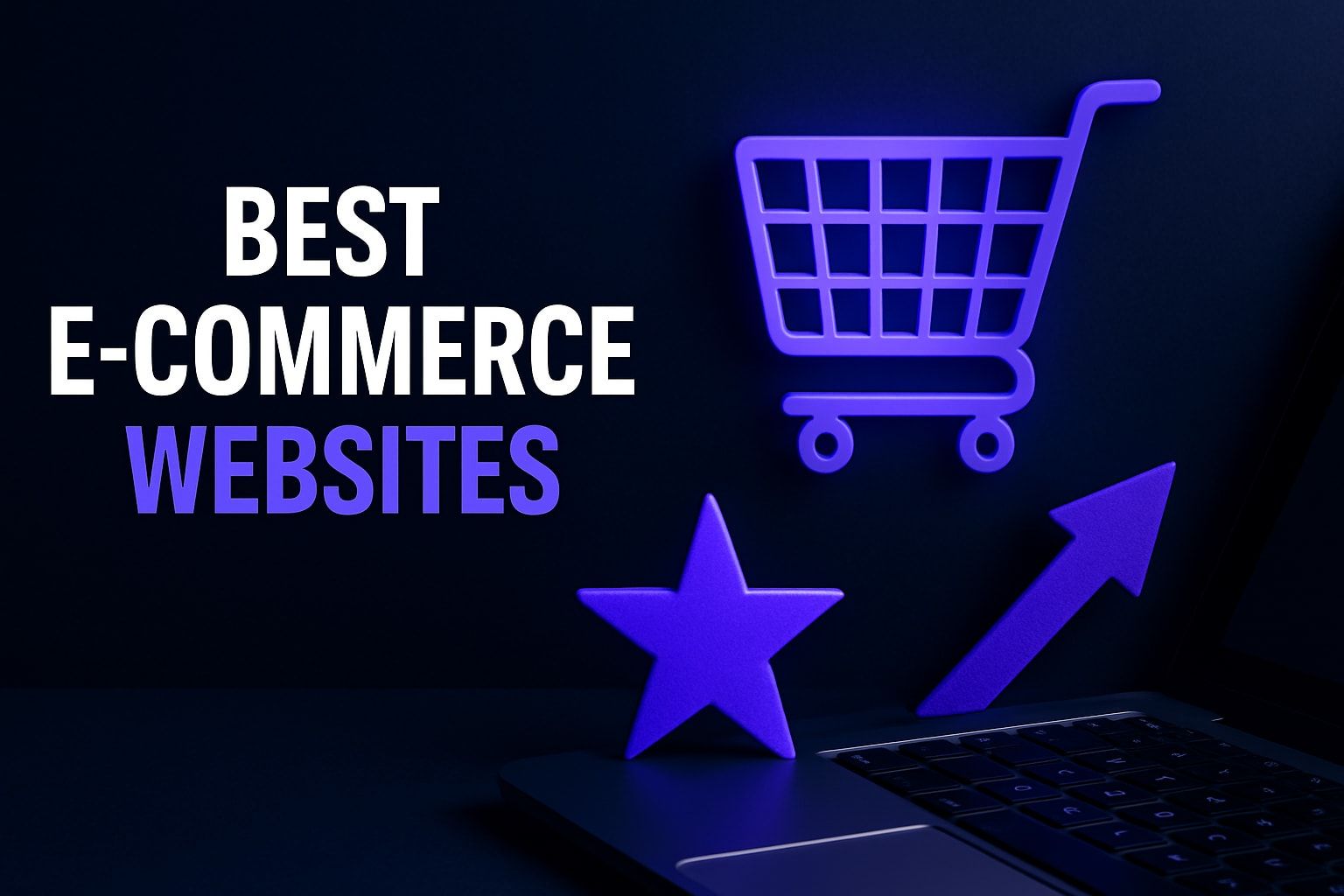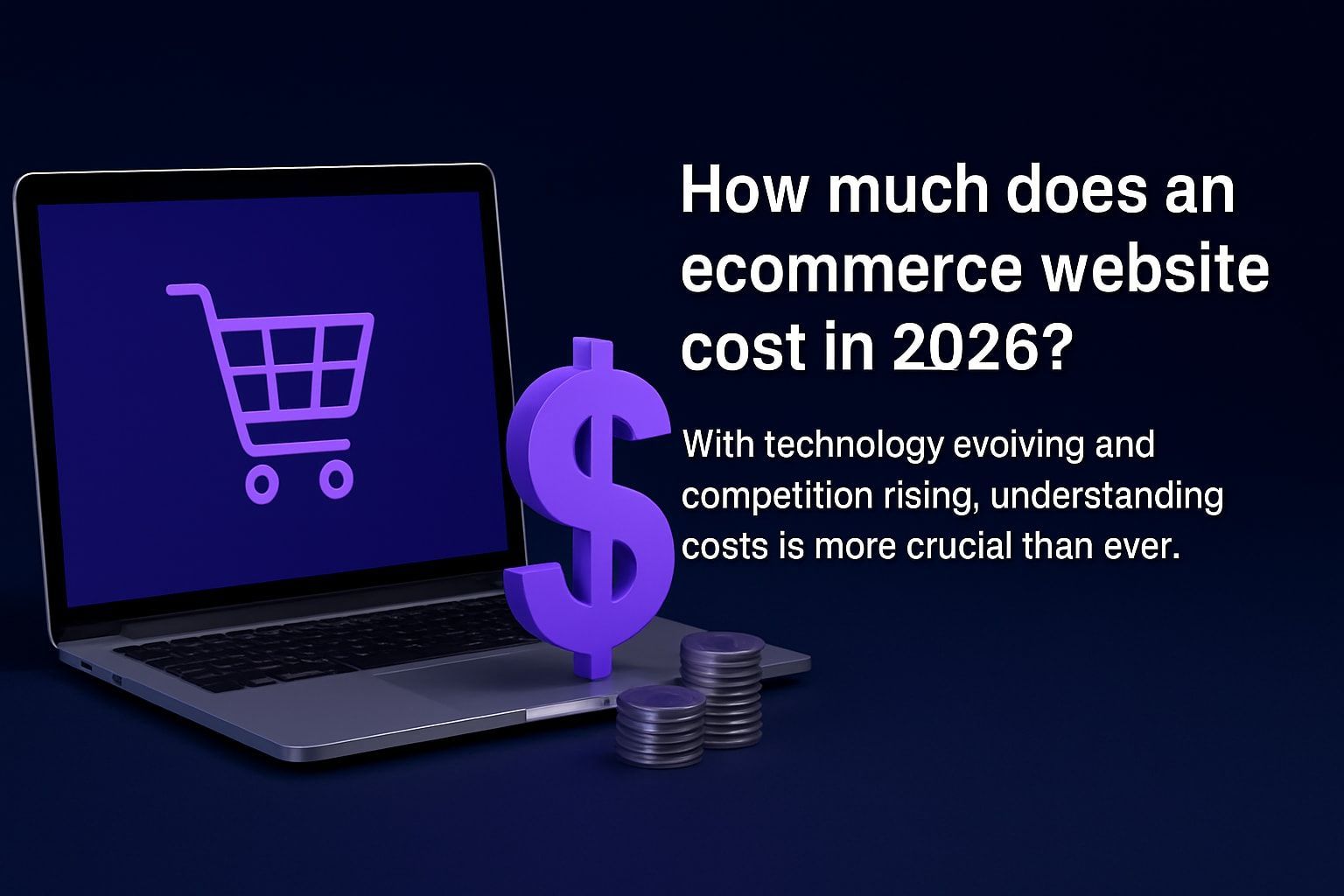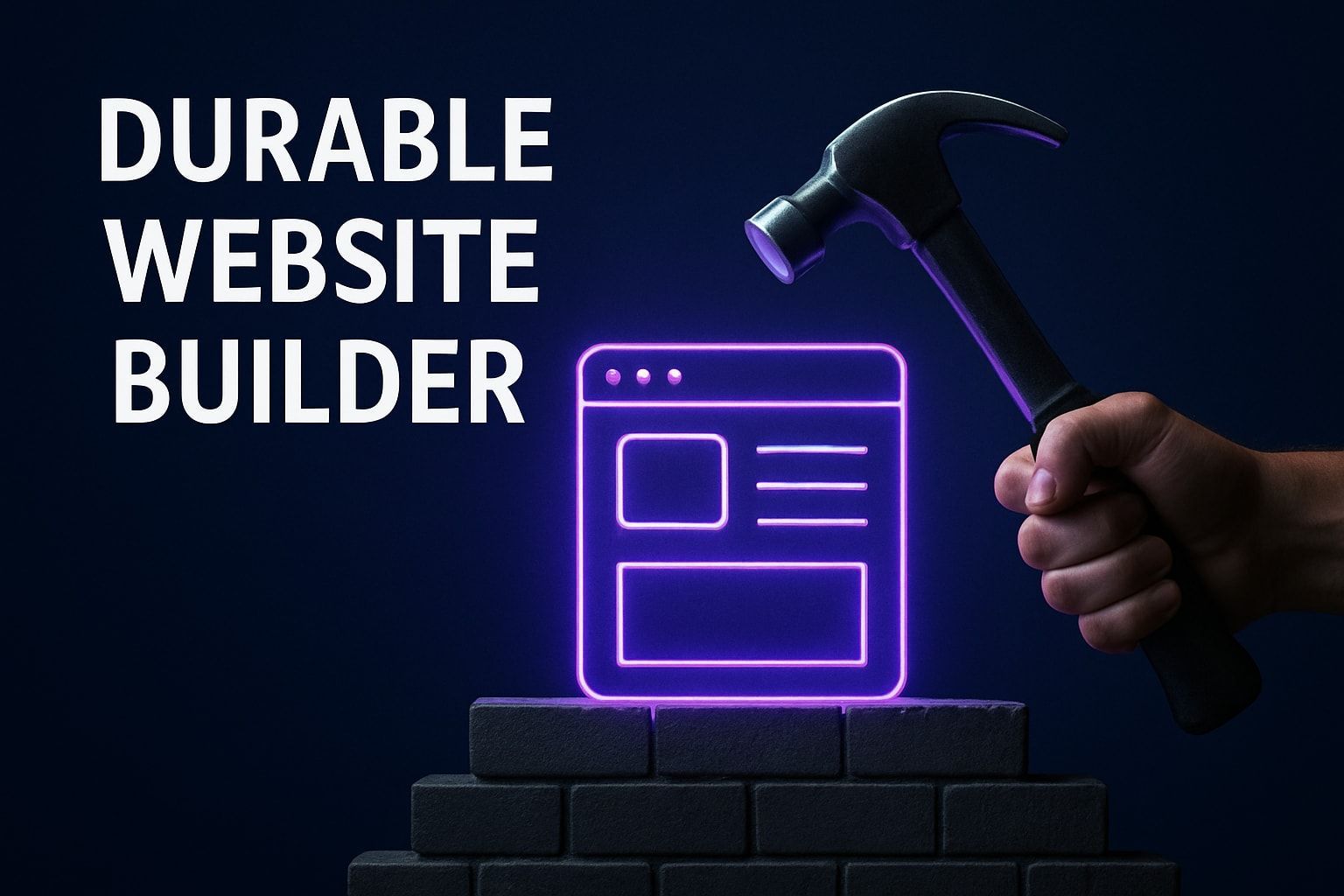How to Create Webpages: A Complete Guide (2025)
Unlock your digital potential in 2025! Today, the ability to create webpages is more accessible—and more vital—than ever before. Whether you’re starting from scratch or aiming to refresh your skills, this guide will walk you through every essential step.
Explore the latest tools, design trends, and technical must-haves to create webpages that stand out and perform. You’ll learn practical strategies for planning, building, and optimizing your web presence.
Ready to take action? Dive in and discover how easy it is to create webpages that drive results in 2025.
Understanding the Basics of Webpage Creation
Building a strong foundation is essential if you want to create webpages that stand out in 2025. This section will walk you through the core concepts, from what a webpage is to the latest trends and tools shaping the digital landscape.
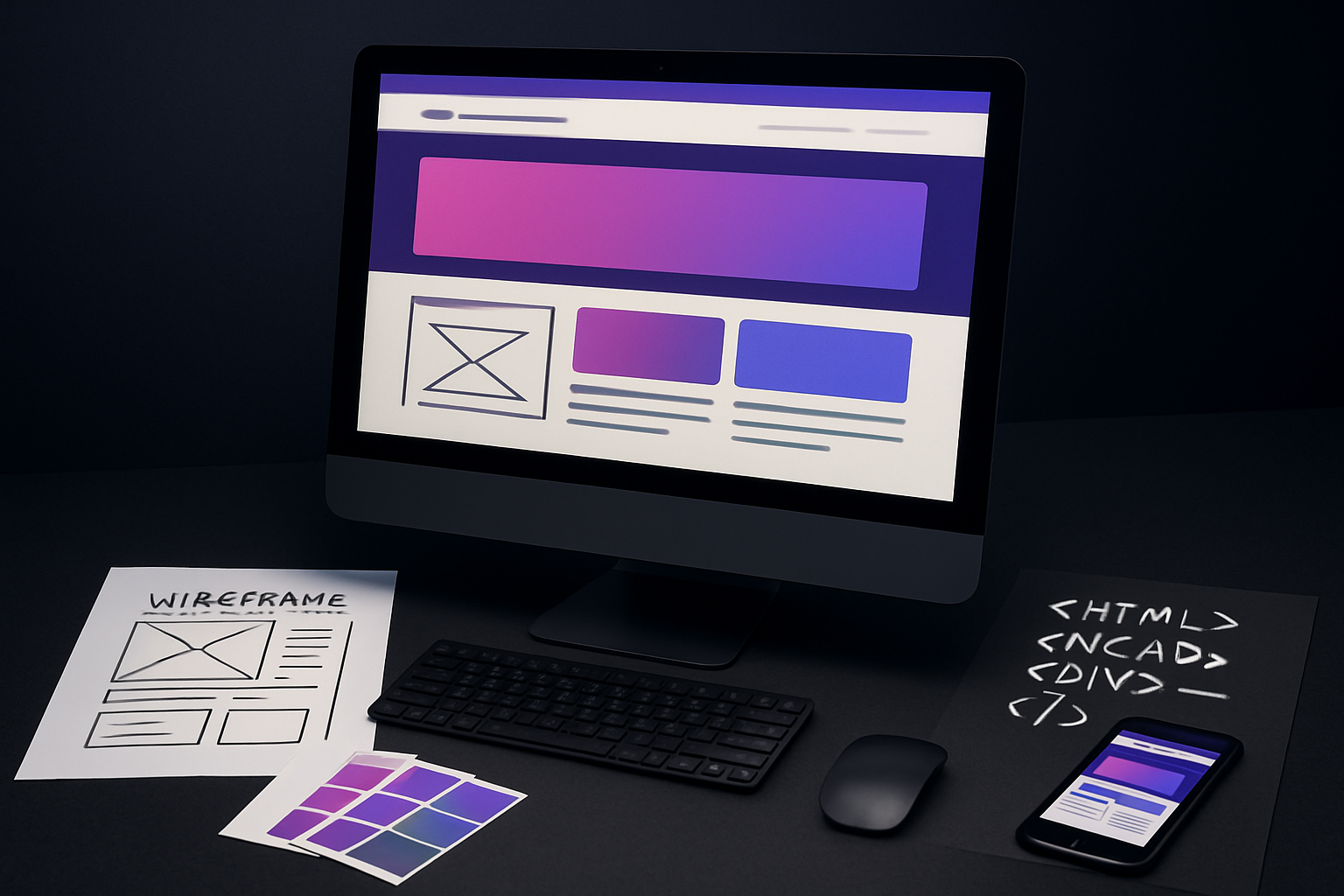
What is a Webpage?
A webpage is a single digital document accessible through a web browser. While a website is a collection of related webpages under one domain, web applications are interactive platforms with advanced features.
You’ll find many types when you create webpages, such as:
- Landing pages
- Blogs
- Portfolios
- eCommerce pages
- Contact forms
Each type serves a specific purpose, but all share the goal of delivering content or functionality to users.
Why Webpages Matter in 2025
In 2024, there are over 1.1 billion websites online (Internet Live Stats), making the ability to create webpages more vital than ever.
Webpages are the backbone of business visibility, personal branding, and information sharing. Whether you’re an entrepreneur or a creative, your online presence starts with the decision to create webpages that showcase your goals and expertise.
Essential Components of a Modern Webpage
To create webpages that engage and convert, focus on these core structural elements:
- Header: Logo, navigation, or branding.
- Body: Main content, images, and multimedia.
- Footer: Contact info, social links, legal details.
- Navigation: Menus for seamless browsing.
Key elements include text, visuals, interactive forms, and clear calls-to-action (CTAs). A balanced combination ensures your webpages are both functional and appealing.
The Evolution of Webpage Creation Tools
Not long ago, anyone wanting to create webpages needed to code everything by hand using HTML and CSS. Today, the landscape has shifted dramatically.
We now have no-code and low-code platforms, as well as AI-powered website creation, making it accessible for everyone to create webpages quickly and efficiently. These tools automate much of the heavy lifting, letting you focus on design and user experience instead of just code.
Skills and Tools Required
To create webpages, start with a basic understanding of:
- HTML: The backbone of webpage structure.
- CSS: Styling and layout.
- JavaScript: Optional interactivity for beginners.
Modern tools make the process easier:
- Website builders (drag-and-drop)
- Content Management Systems (WordPress, Joomla)
- Code editors (VS Code, Sublime Text)
Choose the tools that match your skills and goals.
Trends Shaping Webpage Creation in 2025
If you want to create webpages that thrive in 2025, keep up with these trends:
- Mobile-first and responsive design: Ensure your site looks great everywhere.
- AI-driven design and content: AI tools can automate layouts, content, and even image selection.
- Accessibility and Core Web Vitals: Prioritize fast load times and inclusive design for all users.
These trends help you future-proof your digital projects as you create webpages for any purpose.
Choosing the Right Approach for Your Needs
When you create webpages, you’ll choose between building them yourself or hiring a professional.
Consider these factors:
| Factor | DIY | Professional |
|---|---|---|
| Budget | Lower | Higher |
| Timeline | Flexible | Faster (with budget) |
| Scalability | Moderate | High |
| Technical Skill | Basic–Intermediate | Not required |
Think about your budget, timeline, scalability, and comfort with technology. There’s no one-size-fits-all approach—choose what empowers you to create webpages that meet your vision.
Planning Your Webpage: Strategy and Structure
Setting a strong foundation is essential when you create webpages that truly stand out. Before diving into design or development, thoughtful planning will help guide every step and maximize your site’s impact. Let’s break down the key strategic elements you need to consider.

Defining Your Purpose and Audience
Every successful attempt to create webpages starts with a clear purpose. Are you building an online portfolio, launching a business, or sharing information? Set specific goals for your site from the outset.
Next, identify your target audience. Consider their demographics, preferences, and what problems your site will solve for them. Understanding your audience helps you tailor both your content and design choices, ensuring your webpage resonates from the very first visit.
Mapping Out Content and Features
Once you know why you want to create webpages and who they’re for, plan the content and features. List the types of text, images, and multimedia you’ll need. Do you want a contact form, blog, or eCommerce capability?
Here’s a quick checklist:
- Homepage with clear messaging
- About and contact pages
- Blog or news section
- Product or service listings
- Social media integration
Planning these features early streamlines the building process and keeps your project focused.
Creating a Sitemap and Wireframes
Visualizing your site’s structure is a crucial step when you create webpages. Start by building a simple sitemap—a diagram showing all the main pages and how they connect.
Wireframes are basic sketches of page layouts, outlining where key elements like headers, navigation, and CTAs will appear. Tools like Figma, Sketch, or Balsamiq can help you quickly mock up ideas and share them with collaborators for feedback.
Crafting User Journeys and Navigation
Think about the paths visitors will take as they explore your site. User journeys map out the steps a visitor follows to reach key goals, such as making a purchase or contacting you.
Effective navigation is essential. Use clear menus, logical page groupings, and visible CTAs to guide users. Intuitive navigation not only boosts engagement but also supports SEO, making it easier for search engines to index your site.
Branding and Visual Identity
To create webpages that feel professional, your visual identity must be consistent. Choose a color scheme and typography that reflect your brand’s personality. Use imagery that speaks to your audience and reinforces your message.
If you want to speed up the design process, consider starting with professional website templates that are customizable to your needs. Templates help ensure a cohesive look and save you time without sacrificing quality.
Accessibility and Inclusivity Considerations
Accessibility should never be an afterthought when you create webpages. Follow WCAG 2.2 guidelines to make your site usable for everyone, including people with disabilities.
Key considerations include:
- High color contrast for readability
- Alt text for images
- Keyboard navigability
- Clear, simple language
Meeting accessibility standards isn’t just ethical—it’s often a legal requirement.
Setting Measurable Objectives
Finally, make your progress trackable. Define key performance indicators (KPIs) that align with your goals.
Common website KPIs:
| Goal | KPI Example |
|---|---|
| Grow audience | Monthly visitors |
| Increase sales | Conversion rate |
| Boost engagement | Average session time |
Set up analytics tools to monitor these metrics. This data will show if your strategy to create webpages is working—or if it’s time to adjust your approach.
Step-by-Step Guide to Creating a Webpage
Ready to dive in and create webpages that stand out in 2025? This step-by-step guide will take you from a blank canvas to a polished, high-performing website. No matter your experience level, following these steps ensures you cover all the essentials to create webpages that look great and work flawlessly.
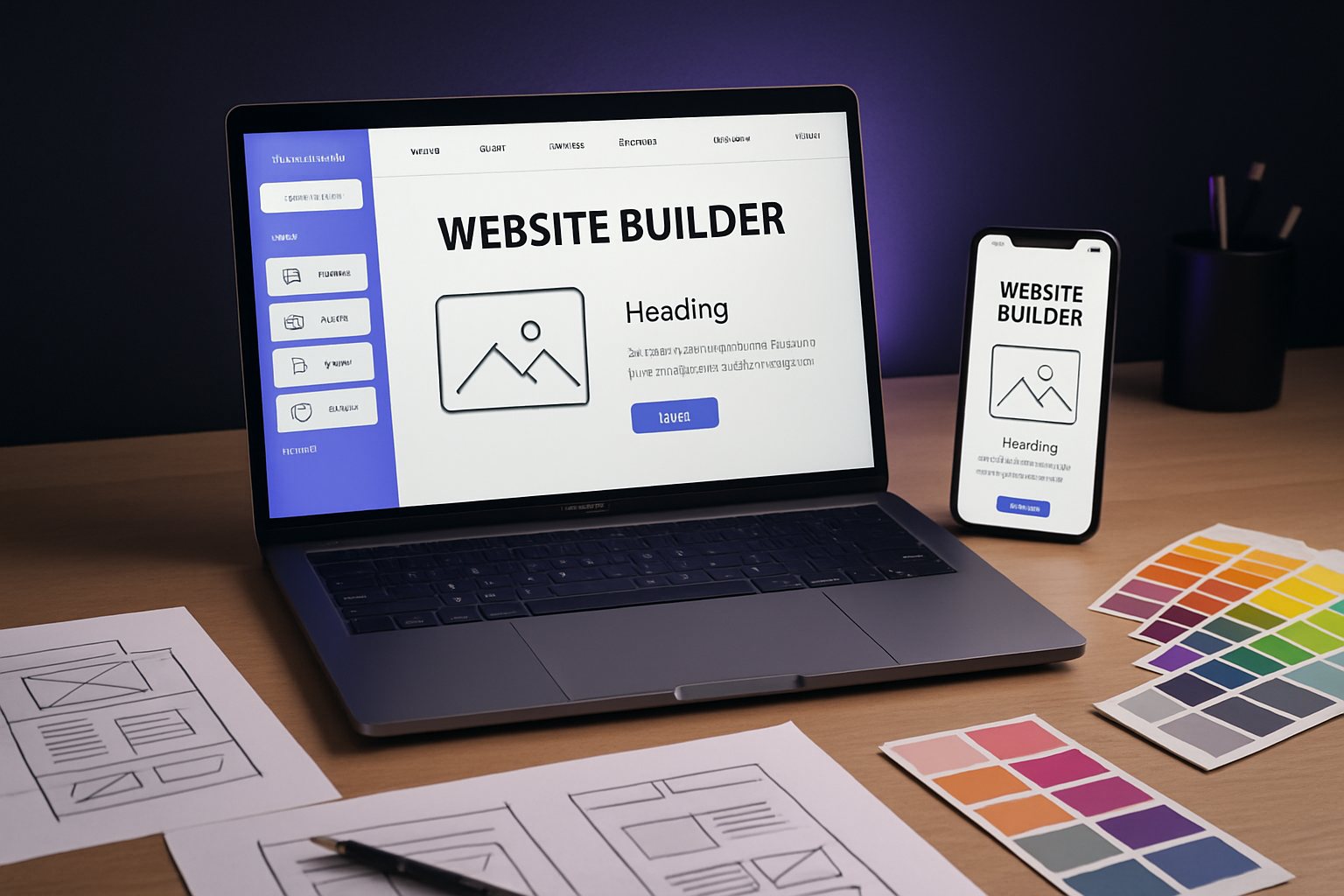
Step 1: Selecting Your Platform or Technology
Choosing how you’ll create webpages is the first big decision. There are three main routes:
| Platform/Tech | Best For | Pros | Cons |
|---|---|---|---|
| HTML/CSS/JS | Full control, coders | Customizable, lightweight | Steep learning curve |
| CMS (WordPress, etc) | Blogs, portfolios | Flexible, huge plugin ecosystem | Can be complex to maintain |
| Website Builders | Beginners, SMBs | Drag-and-drop, no coding needed | Less customization at times |
In 2025, AI-powered website builders are making it incredibly easy to create webpages with just a few clicks. Consider your needs for control, scalability, and technical comfort. If you want quick results with minimal code, modern builders like Wix, Squarespace, and Webflow are excellent starting points. For those seeking in-depth customization, learning basic HTML and CSS is still valuable.
Step 2: Registering a Domain and Setting Up Hosting
Your domain is your online address—it’s how people find your site. When you create webpages, choose a domain name that’s short, memorable, and reflects your brand.
Tips for choosing a domain:
- Use keywords relevant to your business or topic.
- Avoid numbers and special characters.
- Opt for a .com extension if possible.
Next, select a hosting provider. Hosting types include:
- Shared Hosting: Affordable, great for small sites.
- VPS Hosting: More control and resources.
- Cloud Hosting: Scalable and reliable.
- Managed WordPress: Hassle-free for WordPress users.
Check for SSL certificates and easy integration with your platform. Once your domain and hosting are set, you’re ready to create webpages that are accessible to the world.
Step 3: Designing Your Webpage Layout
Design is where creativity meets usability. When you create webpages, focus on layouts that are visually appealing and user-friendly.
Responsive design ensures your site looks good on any device. Use grid systems like CSS Grid or Flexbox for flexible layouts. Here’s a simple HTML structure to get started:
<header>
<nav>Navigation</nav>
</header>
<main>
<section>Main Content</section>
</main>
<footer>
<p>Footer Info</p>
</footer>
Stick to a consistent color scheme and typography. Place key elements—like your logo and navigation—where users expect them. Preview your layout on different screen sizes to guarantee a seamless experience.
Step 4: Adding Content and Media
Content is the backbone when you create webpages. Write clear, engaging copy with SEO in mind. Break up text with headings, bullet points, and short paragraphs.
Optimize images:
- Compress files for fast loading.
- Use descriptive file names and alt text.
Integrate multimedia:
- Embed videos for richer storytelling.
- Add galleries or sliders for visual impact.
Effective calls-to-action (CTAs) like "Sign Up Now" or "Get Started" guide visitors toward your goals. Always preview content on desktop and mobile to ensure readability.
Step 5: Implementing Essential Features
To create webpages that deliver results, add features that enhance user interaction:
- Contact Forms: Make it easy for visitors to reach you.
- Live Chat: Offer instant support.
- Newsletter Signups: Grow your audience.
Social media integration boosts your reach. If you’re planning to sell products, explore eCommerce essentials like product pages, shopping carts, and payment gateways. For more insights on how to build effective online stores, check out Building eCommerce webpages.
Prioritize features based on your website’s purpose. Integrate only what adds value to your audience.
Step 6: Ensuring Accessibility and Compliance
Accessibility ensures everyone can use your site. As you create webpages, follow these best practices:
- Add alt text to all images.
- Use semantic HTML elements (like
<nav>,<main>,<footer>). - Implement ARIA labels where needed for assistive tech.
Compliance with GDPR, ADA, and other regulations protects your users and your business. Provide privacy policies, cookie consent, and easy opt-out options for forms. Regularly audit your site for accessibility improvements.
Step 7: Testing and Previewing Your Webpage
Before you publish, thoroughly test your site. When you create webpages, cross-browser and device testing is vital.
Top tools:
- BrowserStack
- LambdaTest
Checklist:
- Check all links and forms.
- Review spelling and grammar.
- Ensure design consistency across devices.
Ask friends or colleagues to test user experience—fresh eyes spot issues you might miss. Fix bugs and polish details before launch.
Step 8: Publishing Your Webpage
You’re almost there! Before going live, revisit your checklist:
- Verify all content is up-to-date.
- Remove placeholder images or text.
- Confirm all analytics and tracking codes are installed.
Once ready, hit publish. Double-check your site’s visibility in search engines and test the live version on multiple devices. Now you’ve learned how to create webpages that are modern, accessible, and ready for visitors.
Optimizing Your Webpage for Performance and SEO
Launching your site is just the start. To truly succeed as you create webpages, you need to optimize for speed, user experience, and search engines. Let’s break down the steps to make your site fast, visible, and engaging.
Speed and Performance Optimization
Fast-loading sites are crucial as you create webpages in 2025. Google’s Core Web Vitals score heavily influences rankings and user satisfaction.
Here’s how to maximize speed:
- Compress images using WebP or AVIF formats.
- Implement lazy loading for images and videos.
- Minify CSS, JavaScript, and HTML files.
- Use a content delivery network (CDN) to serve assets globally.
A simple table to compare optimization techniques:
| Technique | Impact | Ease of Use |
|---|---|---|
| Image Compression | High | Easy |
| Lazy Loading | Medium | Easy |
| Code Minification | Medium | Moderate |
| CDN Integration | High | Moderate |
Quick wins here ensure your visitors stick around and search engines favor your pages.
Mobile Optimization Strategies
With over 55% of web traffic coming from mobile devices, it’s essential to create webpages that look and perform great on any screen. Responsive design is non-negotiable.
Follow these practices:
- Use flexible grid layouts and scalable images.
- Test mobile usability with tools like Google’s Mobile-Friendly Test.
- Optimize tap targets and navigation for touch.
Mobile optimization directly affects your rankings and bounce rates. If your audience can’t navigate easily on their phones, you risk losing valuable traffic.
On-Page SEO Fundamentals
On-page SEO is foundational when you create webpages that rank well. Focus on:
- Crafting unique title tags and meta descriptions for every page.
- Structuring content with proper header tags (
<h1>,<h2>,<h3>). - Using keyword research tools to identify what your audience searches for.
- Placing keywords naturally in your content.
For deeper insights, check out these Website SEO optimization tips to boost visibility and drive more organic traffic.
Content Optimization for Search Engines
Quality content is king as you create webpages for 2025. Search engines prioritize relevance, value, and freshness.
Best practices include:
- Regularly update content to keep it current.
- Add structured data (schema markup) for rich search results.
- Use clear headings and short paragraphs for readability.
Well-optimized content not only improves rankings but also builds trust with your audience, setting your site apart from competitors.
Technical SEO Essentials
Technical SEO lays the groundwork for search engines to find and index your website as you create webpages.
Checklist for technical success:
- Submit an XML sitemap to search engines.
- Configure
robots.txtto control page crawling. - Ensure your site uses HTTPS with an SSL certificate.
- Fix crawl errors and optimize site architecture.
These behind-the-scenes tweaks keep your site healthy and discoverable.
User Experience and Engagement Signals
Search engines now measure how users interact with your site. To create webpages that engage, focus on:
- Reducing bounce rates by delivering relevant, fast-loading content.
- Boosting dwell time with interactive elements like polls or quizzes.
- Adding live chat or chatbots for real-time support.
A positive user experience signals to search engines that your site is valuable, which can improve your rankings.
Analytics and Continuous Improvement
Optimization isn’t a one-time task. As you create webpages, set up analytics to track performance and guide improvements.
Get started by:
- Installing Google Analytics for traffic insights.
- Using Google Search Console to monitor search visibility.
- Reviewing KPIs like traffic, conversions, and engagement rates.
Let data steer your ongoing optimization efforts, ensuring your site stays ahead in the competitive 2025 web landscape.
Leveraging Modern Tools and AI for Webpage Creation
Modern tools and AI are transforming the way we create webpages. In 2025, building a website is no longer tied to complex code. Instead, intuitive platforms and smart assistants empower anyone to design, launch, and manage a professional site with ease. Let’s explore the evolving landscape and see how you can leverage these advancements for your next project.
The Rise of AI-Powered Website Builders
AI-powered website builders are quickly becoming the go-to solution for those looking to create webpages without a steep learning curve. These platforms use artificial intelligence to automate design, layout, and content generation, making the process faster and smarter. In fact, usage of AI website builders has climbed 30% year-over-year, reflecting their growing popularity among beginners and professionals alike.
If you’re interested in exploring the latest options, AI-Powered Website Builders in 2025 offers an in-depth analysis of the best platforms available, helping you find the right fit for your needs.
Comparing Traditional vs. AI-Driven Approaches
When you create webpages today, you can choose between traditional methods—like hand-coding or using a CMS—and AI-driven tools. Traditional approaches give you full control and customization but often require more technical know-how and time. In contrast, AI-driven builders accelerate setup, offer pre-designed templates, and automate repetitive tasks.
Consider the following comparison:
| Approach | Speed | Customization | Learning Curve |
|---|---|---|---|
| Traditional | Moderate | High | Steep |
| AI-Driven | Fast | Moderate | Gentle |
Choosing the right method depends on your goals and technical comfort.
Key Features to Look for in Modern Website Builders
To efficiently create webpages, look for website builders that blend user-friendly design with robust functionality. Essential features include:
- Drag-and-drop editors for intuitive layout control
- A diverse template library, catering to multiple industries
- Built-in SEO tools to boost visibility
- AI content assistants for faster copywriting
- Integrations with analytics, marketing, and eCommerce platforms
These features streamline the process, making it easier to turn your ideas into reality.
Avantiy: AI-Powered Website Creation Made Simple
Avantiy takes the hassle out of how you create webpages, offering an intuitive drag-and-drop editor and highly customizable templates. Its platform leverages AI to assist with both design and content, meaning you can launch a professional, mobile-friendly site in record time.
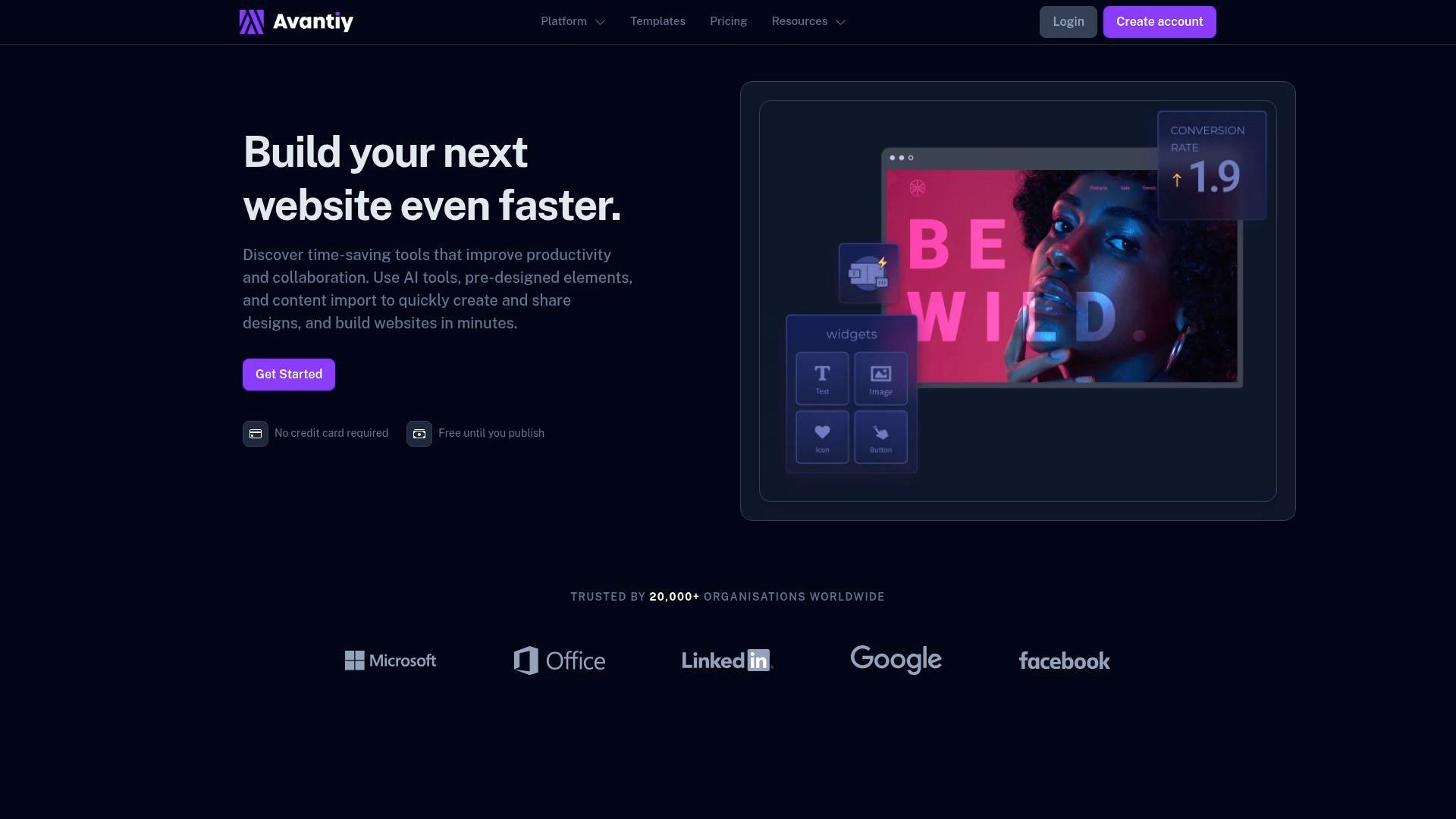
Avantiy’s built-in SEO features, seamless integrations, and automated suggestions empower individuals and small businesses alike—no coding required. Whether you’re starting from scratch or upgrading, Avantiy is designed to grow with your ambitions.
Integrating with Third-Party Tools and Services
As you create webpages, integration is key for scalability and functionality. Modern website builders let you connect marketing tools, analytics dashboards, CRM systems, and eCommerce solutions with just a few clicks.
This extensibility ensures your site keeps pace with your business needs. Look for platforms that offer a broad range of integrations and easy setup, so you can add new features as your audience grows.
Future Trends in Webpage Creation
Looking ahead, the way we create webpages will continue to evolve with advancements like predictive design, voice search optimization, and AR/VR integration. AI will increasingly anticipate user needs, suggesting layouts and content before you even ask.
Preparing for these trends now will help future-proof your site and keep you ahead in a rapidly changing digital landscape.
Now that you’ve got a clear, step-by-step roadmap to building standout webpages in 2025—and you’ve seen how powerful modern tools and AI can be—it’s time to put that knowledge into action. Whether you’re dreaming up your first portfolio, launching a business, or just want to try your hand at web creation, you don’t have to go it alone. With intuitive platforms like Avantiy, you can turn your ideas into a professional site in no time, no coding required. Why wait?
Start Building Your Website Today and see just how easy and rewarding it can be!
Start building your new website today
No credit of debit card required start building today

